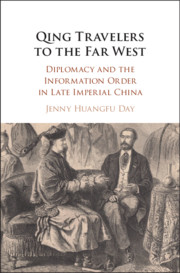Bibliography
Published online by Cambridge University Press: 19 November 2018
- Type
- Chapter
- Information
- Qing Travelers to the Far WestDiplomacy and the Information Order in Late Imperial China, pp. 248 - 268Publisher: Cambridge University PressPrint publication year: 2018

